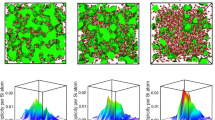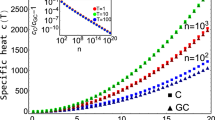Abstract
A QUESTION of fundamental importance in the theory of the solid state is the nature of the arrangement of the ultimate particles in amorphous or vitreous bodies, of which glass is the most familiar example. Is it to be supposed that the molecules are packed together at more or less uniform distances apart, as in crystals, the orientation of individual molecules or of groups of molecules being, however, arbitrary? Or, on the other hand, is the spacing of the molecules itself irregular, the solid exhibiting in a more or less permanent form local fluctuations of density similar to those that arise transitorily in liquids owing to the movement of the molecules? The physical properties of amorphous solids, notably their softening and viscous flow below the temperature of complete fusion, would tend to support the latter view, but the possibility of a closer approximation to the crystalline state should not entirely be, ruled out, especially in view of the very interesting recent work of Lord Rayleigh on the feeble double refraction exhibited by fused silica (Proc. Roy. Soc., 1920, p. 284). A good deal might be expected to depend on the nature of the material, its mode of preparation, and heat treatment. A material formed by simple fusion and re-solidification of comparatively simple molecules, such as silicon dioxide, might stand on a different footing from a material such as ordinary glass built up by chemical action and formation of complex silicates.
This is a preview of subscription content, access via your institution
Access options
Subscribe to this journal
Receive 51 print issues and online access
$199.00 per year
only $3.90 per issue
Buy this article
- Purchase on Springer Link
- Instant access to full article PDF
Prices may be subject to local taxes which are calculated during checkout
Similar content being viewed by others
Author information
Authors and Affiliations
Rights and permissions
About this article
Cite this article
RAMAN, C. Molecular Structure of Amorphous Solids. Nature 109, 138–139 (1922). https://doi.org/10.1038/109138b0
Issue Date:
DOI: https://doi.org/10.1038/109138b0
This article is cited by
-
The anomalous depolarisation of light-scattering in optical glasses
Proceedings of the Indian Academy of Sciences - Section A (1938)
Comments
By submitting a comment you agree to abide by our Terms and Community Guidelines. If you find something abusive or that does not comply with our terms or guidelines please flag it as inappropriate.



